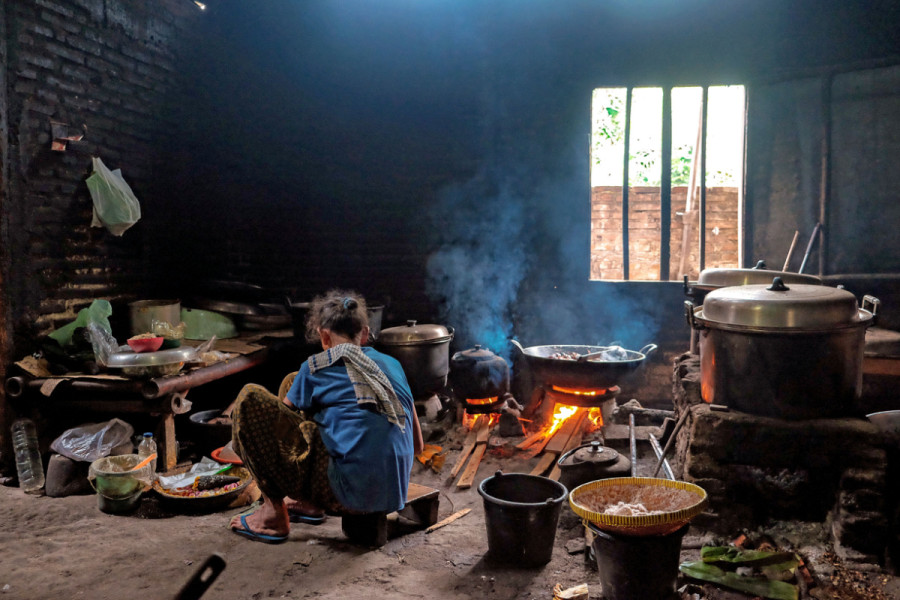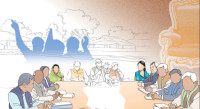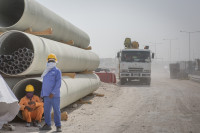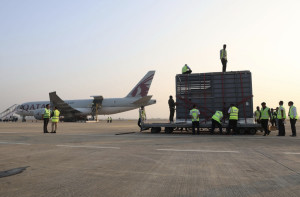Columns
Cost of indoor air pollution
Smoke induced from indoor cooking can critically affect women and children.
Anustha Shrestha
In 2020, Nepal Government approved the Kathmandu Valley Air Quality Management Action Plan, a milestone in tackling air pollution. The plan, however, emphasises outdoor air pollution than indoor. Worryingly, the World Health Organization (WHO) reported that in 2020, indoor air pollution (IAP) claimed the lives of over 3.2 million people, including 237,000 children under five. Moreover, IAP is the fourth leading cause of illnesses and deaths in developing countries, primarily due to poor cooking and heating practices. Around 2.4 billion people—a third of the world's population—still cook using open fires or inefficient stoves that rely on kerosene, biomass (wood, cattle dung, crop waste) and coal.
Traditional energy dependence
The use of traditional energy sources exacerbates the problem of indoor air pollution. According to the Nepal Economic Forum, biomass accounts for 69 percent of primary energy consumption in Nepal, whereas for 63.6 percent of rural households, biomass remains the predominant cooking fuel. They mostly use traditional biomass cookstoves that are inefficient and generate a lot of smoke. The problem of smoke is compounded further in poorly ventilated kitchens. The biomass smoke releases various pollutants, such as carbon monoxide, sulphur dioxide, etc., which potentially cause stroke, ischemic heart disease, chronic obstructive pulmonary disease, pneumonia, bronchitis and lung cancer. Nevertheless, IAP is affecting the health of the population and killing 24,000 people each year in Nepal.
Despite the health hazards caused by traditional fuels and cooking practices, Nepalis continue to use them due to the limited availability of affordable and reliable clean energy sources. While firewood may be freely available locally, bulky liquefied petroleum gas (LPG) is costlier and difficult to transport in remote areas due to a lack of appropriate infrastructure. Likewise, the higher expenses of electric cooking appliances, restrictive tariff structures, frequent outages, and a lack of public knowledge also hinder the use of electricity for cooking. In addition, the use of biogas and solar is more complex and is often limited by scale and geography.
The government has committed to achieving clean cooking by 2030, including ensuring that 25 percent households have clean energy by 2045. But the government has little to show as of now. Nepal, therefore, has to put in more effort to achieve SDG 7, which emphasises affordable and clean energy for everyone.
Urban indoor air pollution
Nepal’s indoor air pollution studies have focused more on rural households and their cooking practices. Studies on other forms of indoor air pollutants are, however, limited. As Nepal undergoes rapid urbanisation, we must acknowledge different indoor air pollutants and their detrimental health effects. These pollutants can be found at home and in offices, classrooms, restaurants, cinemas, shops and other enclosed places.
For instance, chemicals in furniture, fabrics and building materials could irritate the eyes and lungs. They cause nausea, headache and irritation of the nose, eyes and throat by releasing volatile organic compounds (VOC). Some VOCs can cause damage to the kidneys, liver and central nervous system.
Likewise, mould is another poorly discussed indoor air pollutant that grows in moist, poorly ventilated structures. Inhaling mould spores can severely impact people with vulnerable health conditions, aggravating conditions like asthma. In confined and crowded areas, such as offices and classrooms, carbon dioxide concentration can increase to levels that impair cognition. Human breath can release droplets or tiny aerosols that can spread viruses and other pathogens. Also, tobacco smoke—with 70 carcinogens and 7,000 different chemicals—is the primary indoor air pollutant that affects not only smokers but also people staying close by.
Gender bias
Women primarily cook and look after children in Nepali households and spend most of their time indoors. As a result, they are exposed to indoor air pollutants. In rural Nepal, mothers carry their young ones on their backs and cook in poorly ventilated kitchens—a common scenario in households with low incomes and awareness. Additionally, these women spend significant time gathering firewood, which adds to their physical and mental stress. Even if families know the harms of unclean cooking fuels and traditional stoves, women have less say when purchasing cleaner cooking stoves or fuels due to patriarchal household structures. In such households, men are considered responsible for making financial decisions, and often appear less empathetic towards women's needs.
Way forward
Local governments can play a crucial role in combating indoor air pollution. For instance, they can work to raise economic status through diverse livelihood programmes that enable communities to have a quality life. Funding and development agencies as well as the federal government can support such programmes to help people afford cleaner fuel. Conversely, the government must also prioritise providing affordable household fuel to reduce the financial burden. Cleaner cooking technologies, such as improved cook stoves and biogas systems, could be encouraged with subsidies or incentives. Additionally, supporting innovation and research will be beneficial in developing cost-effective solutions. It is also imperative to conduct more research on indoor air pollution impacts to comprehensively understand the current situation.
Improving the accessibility of cleaner fuel requires stakeholders to improve infrastructure such as roads and ropeways while mitigating their environmental impacts. The uninterrupted electric supply could be a boon for cooking and lighting. However, the developers must be mindful of the other social and ecological consequences of hydropower and coal-powered plants. It is also crucial to consider whether money is a problem when installing cleaner cooking and heating stoves or if it is the unwillingness of family members, mostly male ones.
Hence, it is essential that the community, especially the male members, be more aware of women's problems so that appropriate steps can be taken for their well-being. People also need to be mindful of proper ventilation, cleaning of indoor spaces, maintenance of household items (such as chimneys and exhaust fans), and adequate storage of disinfectants and other cleaning products to reduce indoor air pollutants. IAP is common in all households and indoor spaces. We must reduce its impacts to live a healthy life.




 10.12°C Kathmandu
10.12°C Kathmandu













%20(1).jpg&w=300&height=200)

